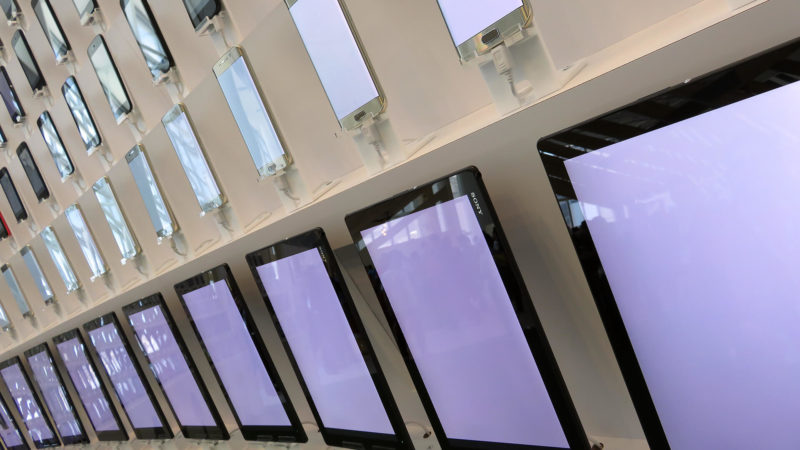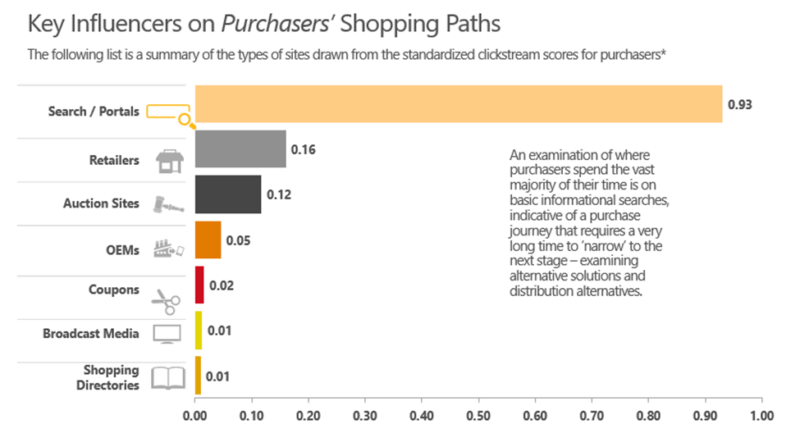New Insights: The Consumer Journey For Electronics
What does the path to purchase look like for those making major electronics purchases? Columnist John Cosley of Microsoft shares key insights from the company's research on the topic.

Understanding the twists and turns consumers take on their path to purchasing electronics is an important step in capturing their attention — and their dollars.
Microsoft (my employer) has a done a great deal of work to understand this journey over the years. And we’ve learned that there are always fresh ways to look at the winding path from first contact to purchase.
In new research that’s especially relevant during this holiday shopping season, we looked at the consumer purchase decision journey for mid-range electronics purchases — things like tablets, smartphones, laptops and TVs.
Here are the questions we were trying to answer:
- When on the journey do consumers cross over from cyberspace to the physical world — and vice versa?
- Which influencers have the greatest reach and impact on consumers?
- Along the journey, where are the pain points? Conversely, which delights along the way resonated most?
And perhaps the biggest question of all: What does a typical purchase path even look like?
We screened a sample of US adults who were technology purchase decision-makers who were looking to purchase a consumer electronics device within the next 30 to 90 days and planning to spend $100 or more.
The study resulted in some important insights. Here’s what we learned:
Product & Performance Information Moves Buyers Through The Journey
Consumers want to evaluate reliable and objective information about the purchases they’re considering. Online shopping is a rational process of collecting information on price and features, along with fact-based recommendations and believable user experiences.
Not surprisingly, reviews are highly influential — especially those found on sites like Amazon, CNET and Consumer Reports.
For these consumers, traditional ads and promotions heavily influence the likelihood of conversion. Print, point-of-purchase and TV advertising, when linked to online ads, sites or other information, were seen as important — especially from well-known, prominent brands.
Buyers also often need to “touch and feel” goods (i.e., collect their own reliable data) before buying — whether it’s in a store or by ordering online and evaluating at home.
According to our research, shoppers were much more likely to have gone to a brick-and-mortar outlet, talked to a sales person, received advice and seen and touched the products they were considering.
Going to the store to experience the product — and speak to a salesperson — is most valued when the device is unique or new to the home, and buyers are seeking more detailed information.
The in-store experience is also important when the item has a higher ticket price or sensory features (like HDTVs, touch screens, speakers or special aesthetics).
Search Is The First Step On The Journey; Social Media Isn’t Even On The Map
Consumers use search engines knowing that they are casting a wide net to assess the device landscape. And while search is viewed as a necessary tool, today’s shoppers have to do a lot of homework.
While many shoppers go to Facebook, Tumblr and Pinterest as part of their daily routine, social media sites are fundamentally not part of their pre-purchase shopping experience and have little if any influence on the decision-making process.
Real-world social networks, on the other hand, play a key role. Word of mouth (WOM) is important as a driver of desire and is often the consumer’s first exposure to a new device.
Buyers often have a “techie” go-to resource, someone who can be very influential when it comes to brand consideration. The “techie” is also relied on for advice, which consumers typically verify through additional online research.
What’s driving online search? That happens when online advertising works hand-in-hand with offline ads. Advertising spurs curiosity, which leads to searches for product reviews and visits to the brand or retailer sites before culminating in a local or online purchase.
Consumer Pain Points Are Real
Retailers would be wise to pay attention to those pain points, as they pose a notable threat to purchases. It starts with a steep learning curve and basic limitations of the store experience. According to our study, consumers felt they needed to learn everything about a device category before making a choice.
With so many options in each category and a constant stream of updates and upgrades, it’s no wonder consumers feel overwhelmed. On the other hand, consumers want a wide in-store selection so they can compare.
Other pain points for consumers include worries about untrustworthy (or unfamiliar/unknown/scam) websites and frustrations with the lack of simple and straightforward product information and expert online chat.
When specifications are not complete or uniform across products and sites, consumers can’t make helpful comparisons. In some cases, they feel they must create their own “database” to comparison-shop.
Points Of Delight? Also Real.
It’s not all about the pain. The consumers we talked to were glad when the information they were looking for was online and at their fingertips, anytime and anywhere. They appreciated the research they can do online (though it’s still too much), especially expert reviews and high-volume (crowd-sourced) reviews.
And in stores, they were delighted by interactions with knowledgeable salespeople, as well as the chance to touch and feel a product.
These consumers were also very specific about what they wanted in an electronics shopping experience, providing electronics makers and retailers with an instructive guide to meeting their needs. Here’s what delighted them during their decision journey:
Finding A Great Deal
- Online price comparisons
- Price watching/flagging
- Price matching in-store
Shopping My Way
- Ability to pick a retailer that suits my shopping style
- Seller ratings based on user reviews
- Delivered to the door/pick up in store (whichever suits)
- Financing options
- Rewards programs (points on purchases)
Satisfaction Guaranteed
- Ease of return/return policies
- Manufacturer warranty
- Fast delivery, order online/in-store, pick up in-store
- Tech support for setup
The Customer Journey Is Surprisingly Predictable
In mapping out a “typical” customer journey, we learned that most consumers follow a fairly consistent pattern. They start with general searches on features, prices and store locations. They also seek out information from product manufacturers (OEMs).
Once they have their basic information, they search for user reviews from blogs, Amazon and traditional retailers like Best Buy and Fry’s. At that point, they typically visit a brick-and-mortar retailer to validate their purchase hypothesis, then complete their purchase either in-store or online, depending on pricing considerations.
Here’s what a typical journey looks like:
Advertisers: Take Note
By better understanding the consumer purchase journey, consumer electronics advertisers can plan and adjust their activities accordingly:
- Start by carefully considering your keyword selection, so that your information is accessible during the all-important window-shopping and research phase.
- Think about cross-device presence and experience — shoppers want anywhere/anytime access.
- Use extensions to deliver more relevant information, and support shoppers during the product evaluation process.
- Take advantage of remarketing to target shoppers based on their journey — ensuring you get the right message across at the right time.
And most important, be sure to deliver on expectations. When consumers click through, give them a pain-free experience with the right information and functionality. When shoppers visit your brick-and-mortar store, be sure they have plenty of opportunity to experience the item they’re considering, along with helpful sales people to cut through the complexity.
Giving customers the best possible experience as they move through their decision-making journey not only pays off in the short term with a purchase, it also helps breed trust and loyalty. And that’s a journey worth taking.
Contributing authors are invited to create content for Search Engine Land and are chosen for their expertise and contribution to the search community. Our contributors work under the oversight of the editorial staff and contributions are checked for quality and relevance to our readers. The opinions they express are their own.
Related stories

